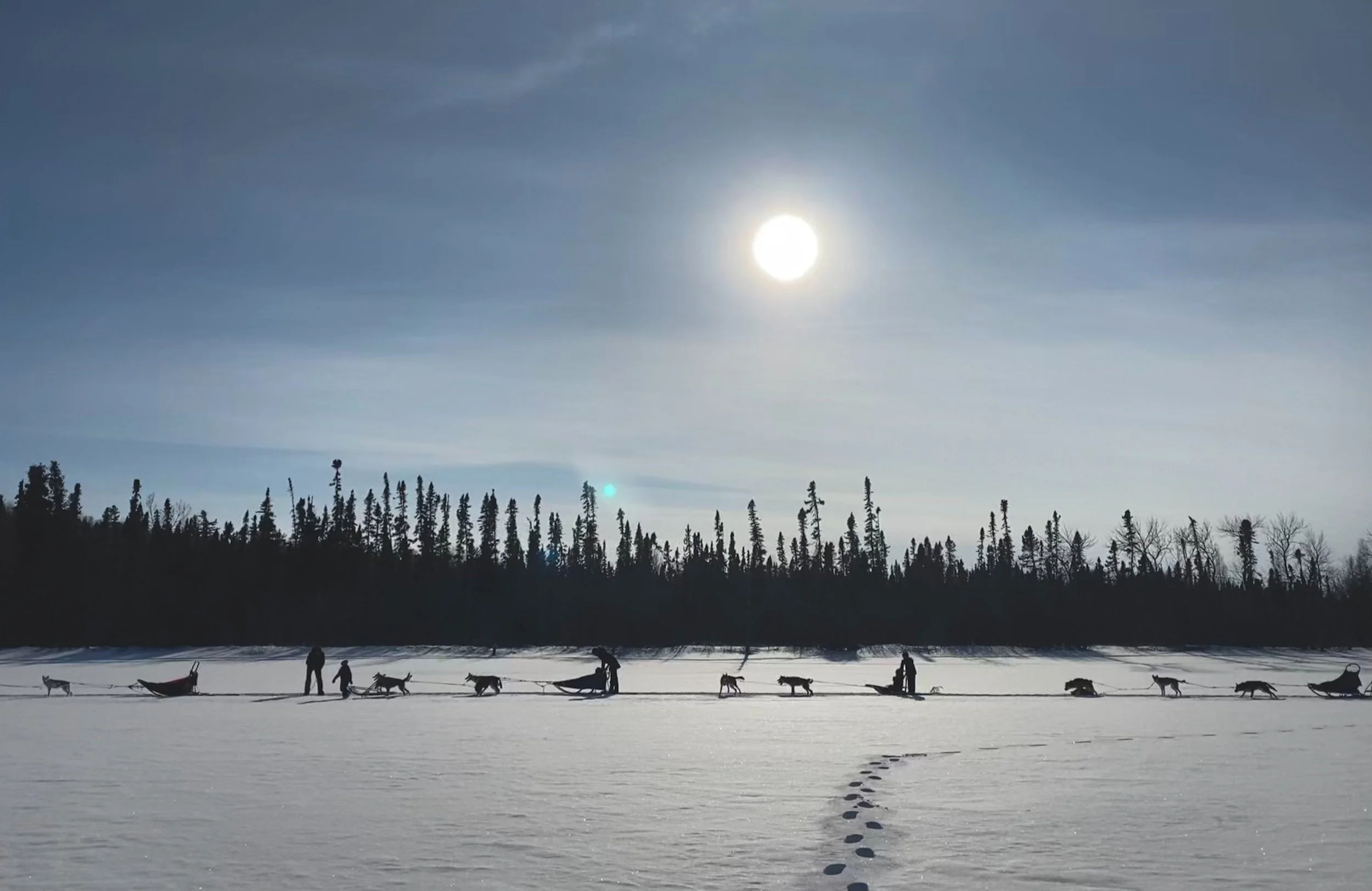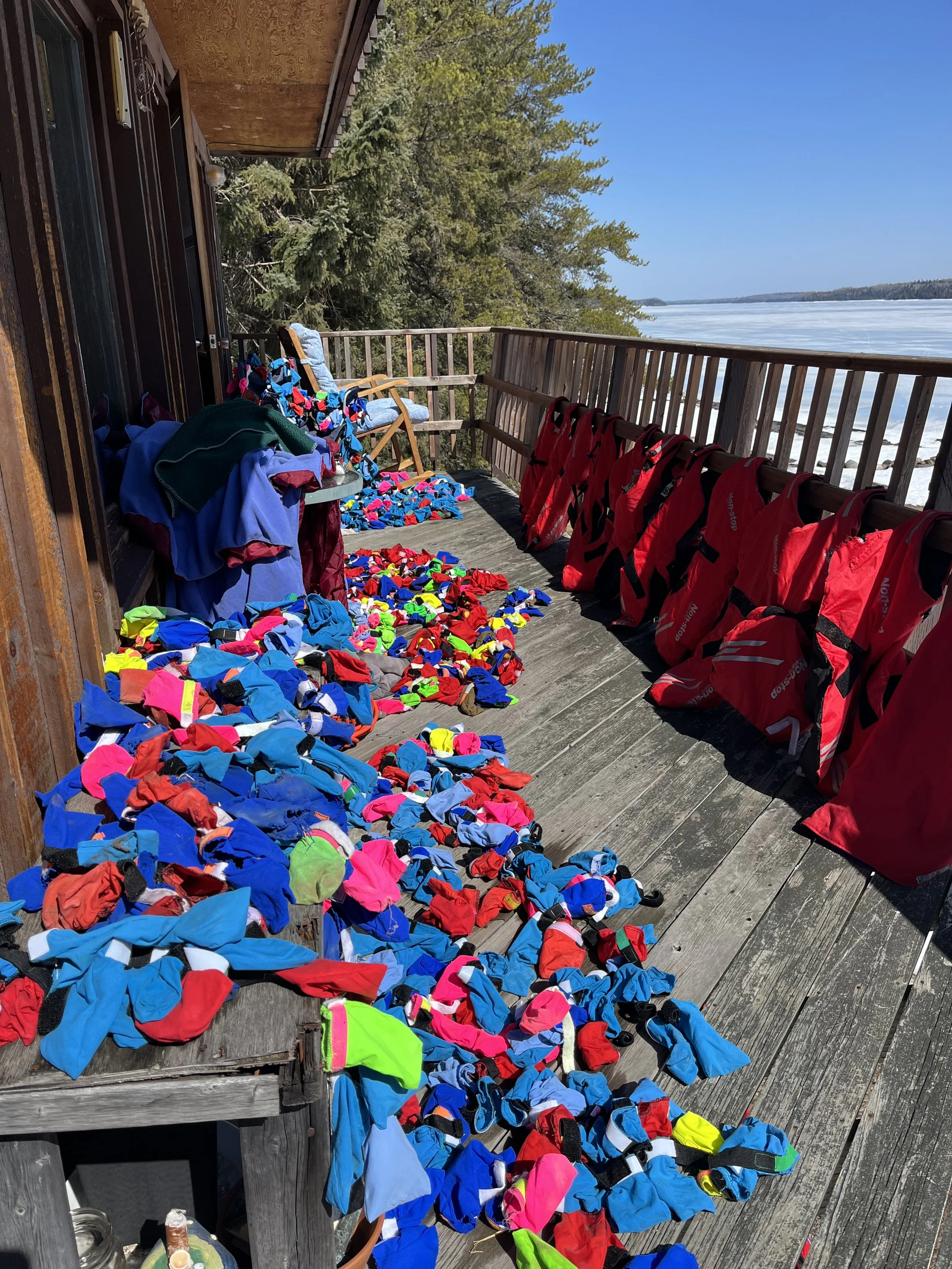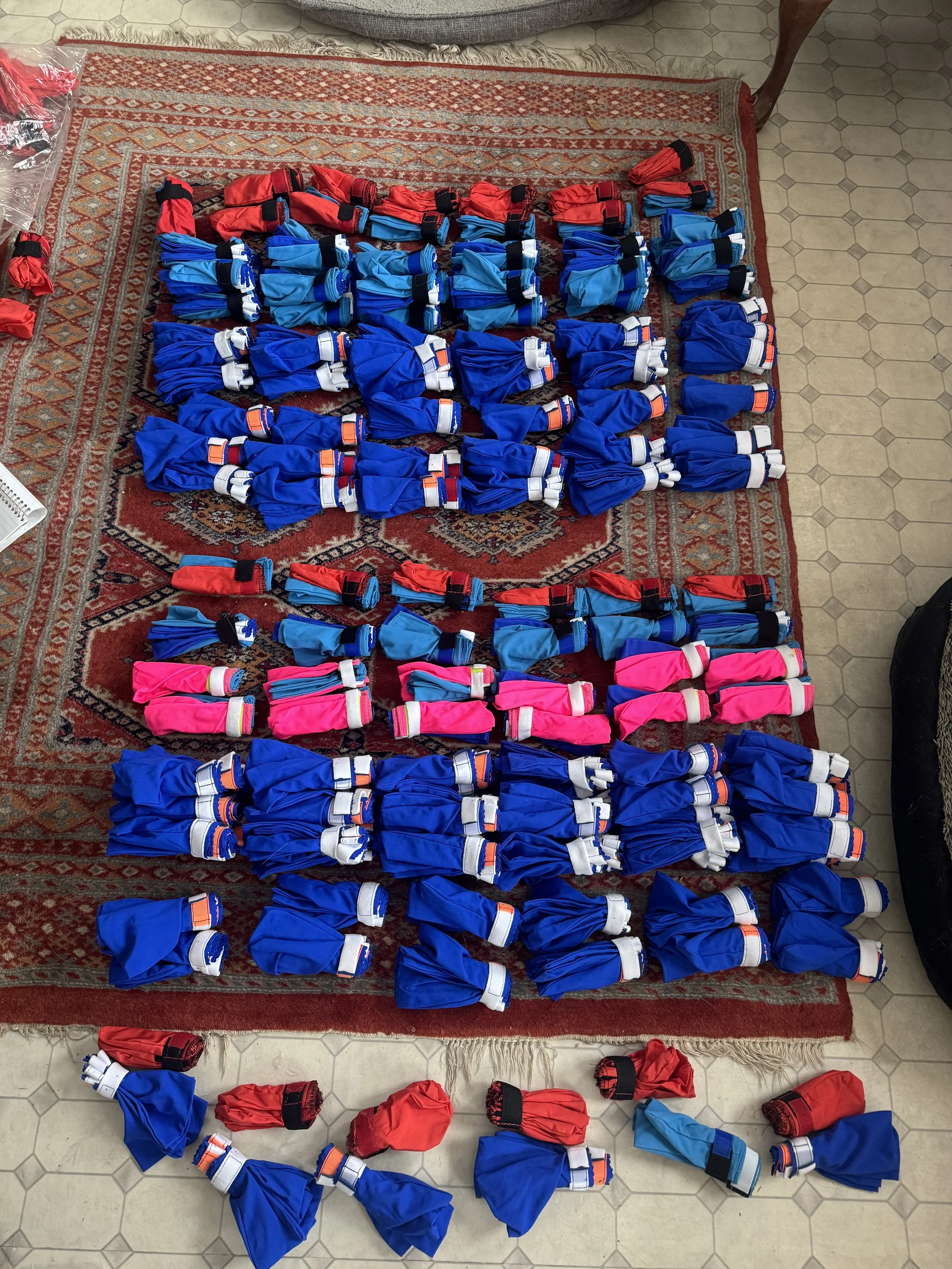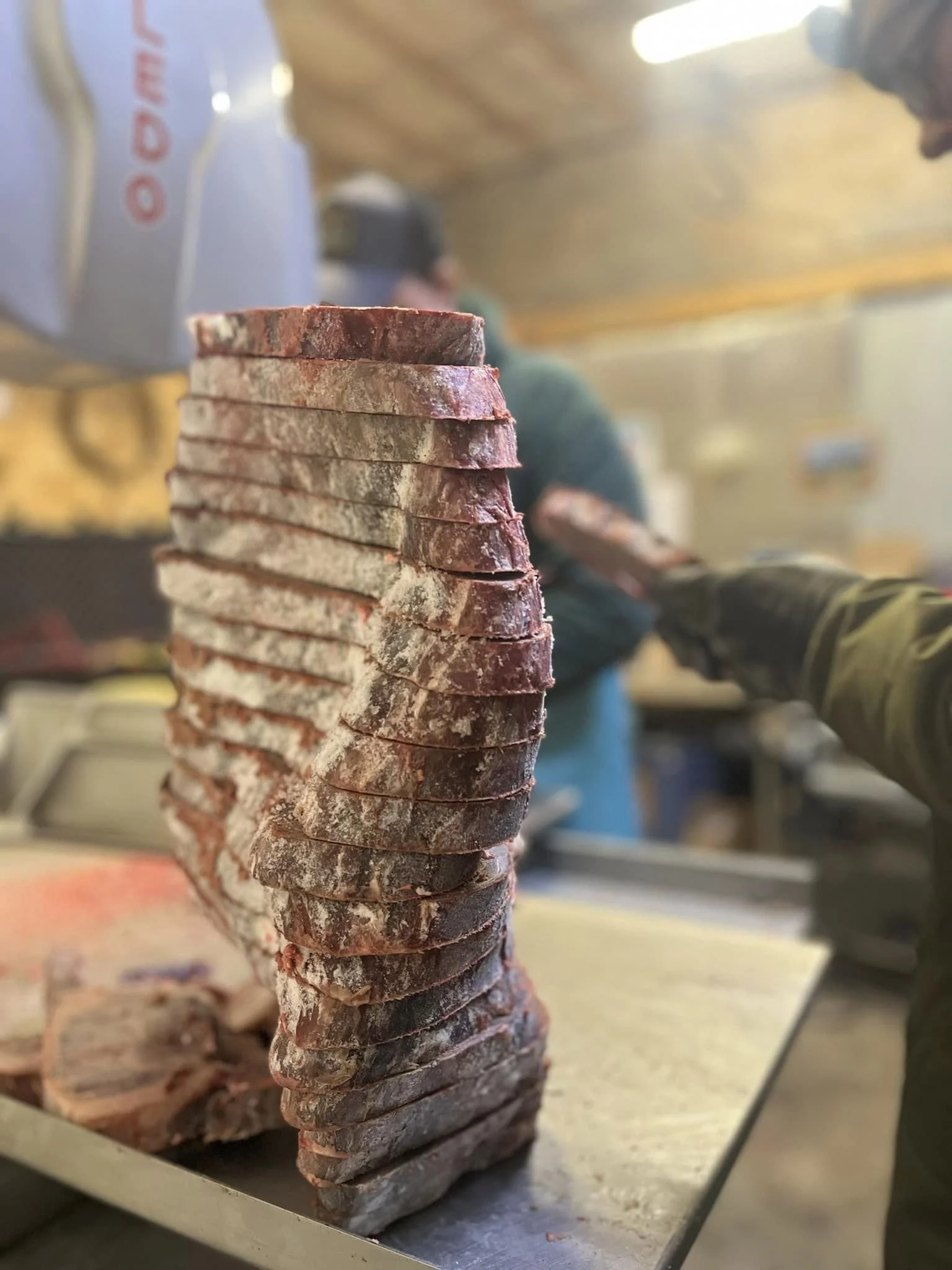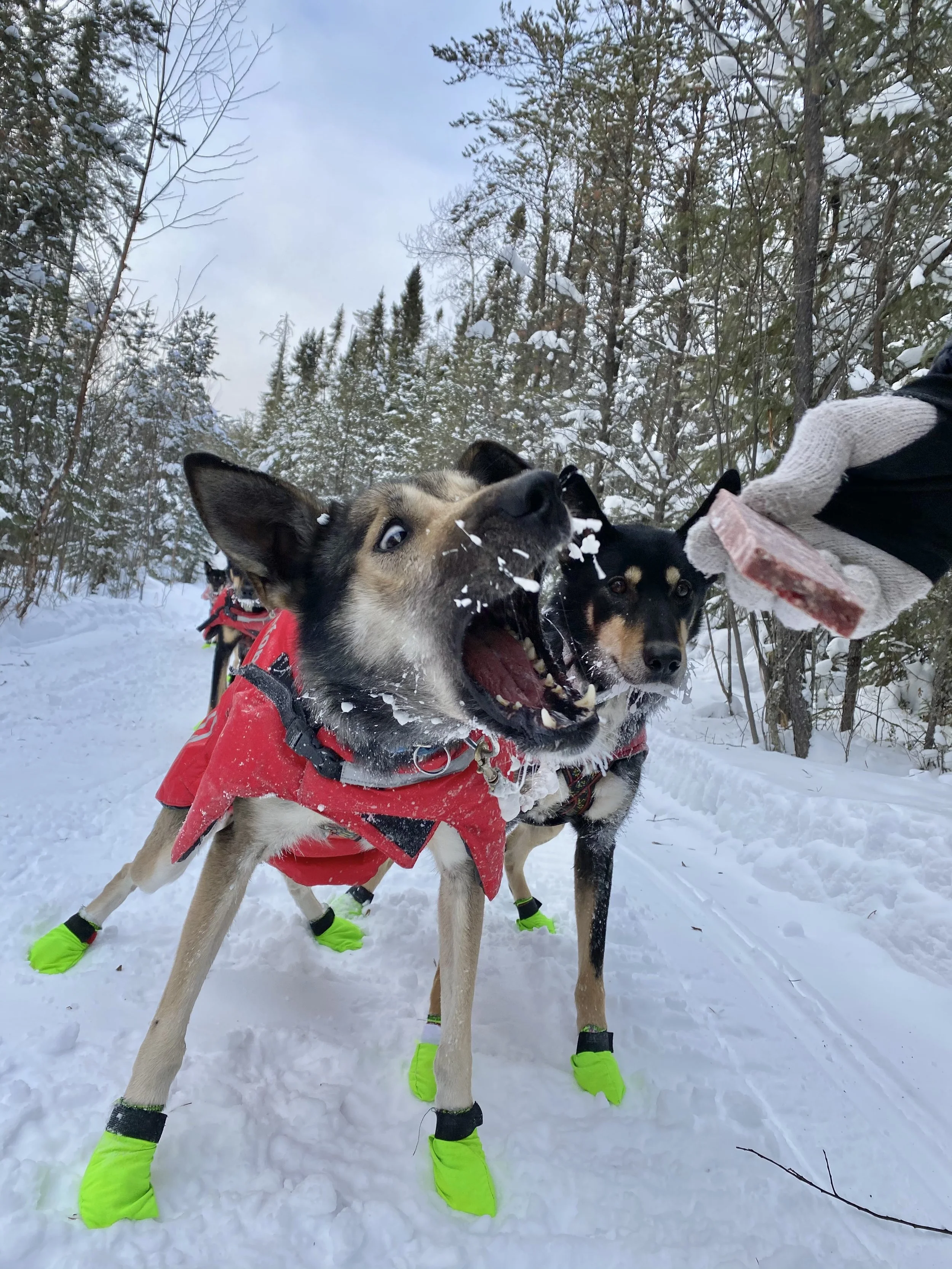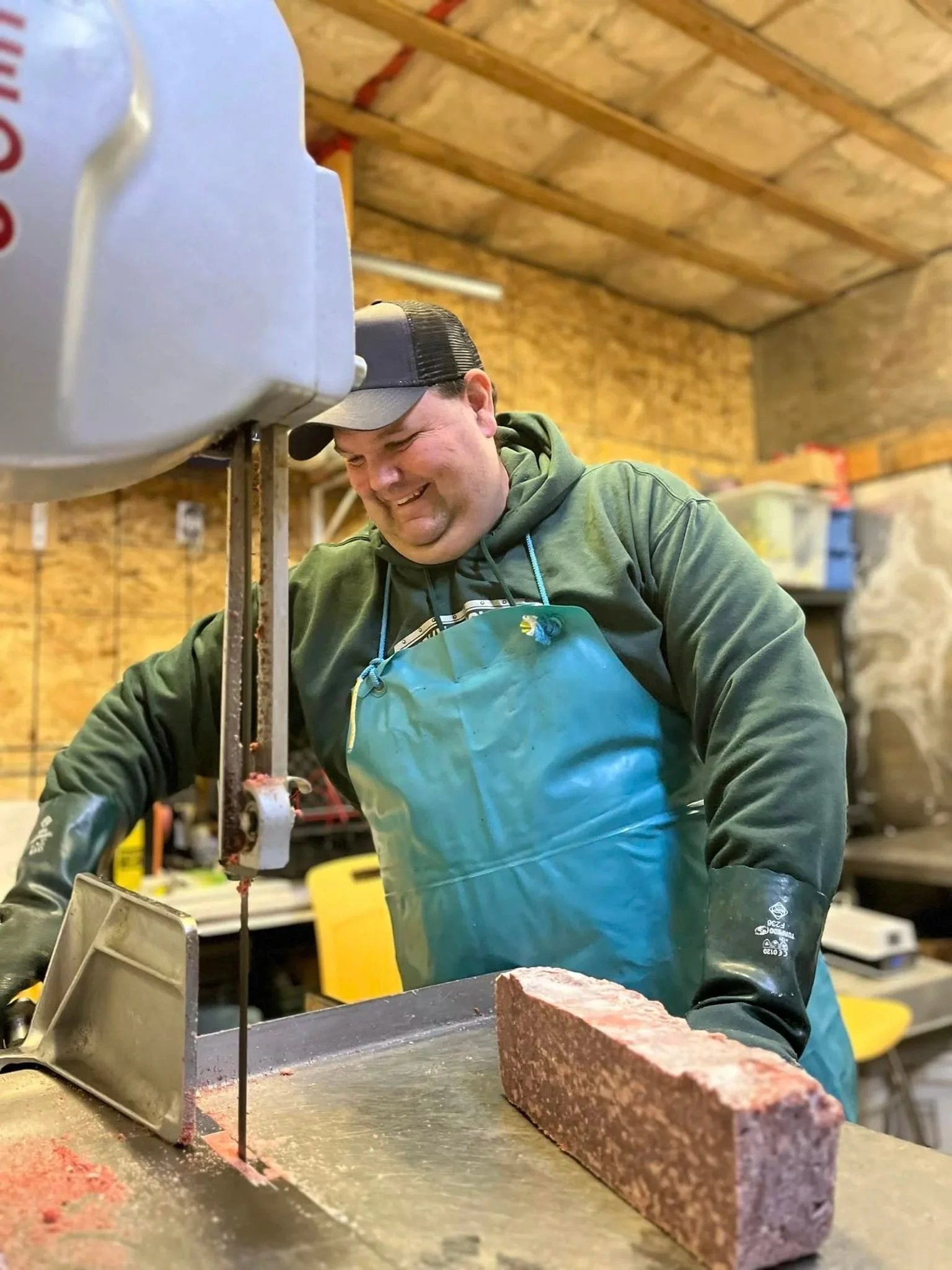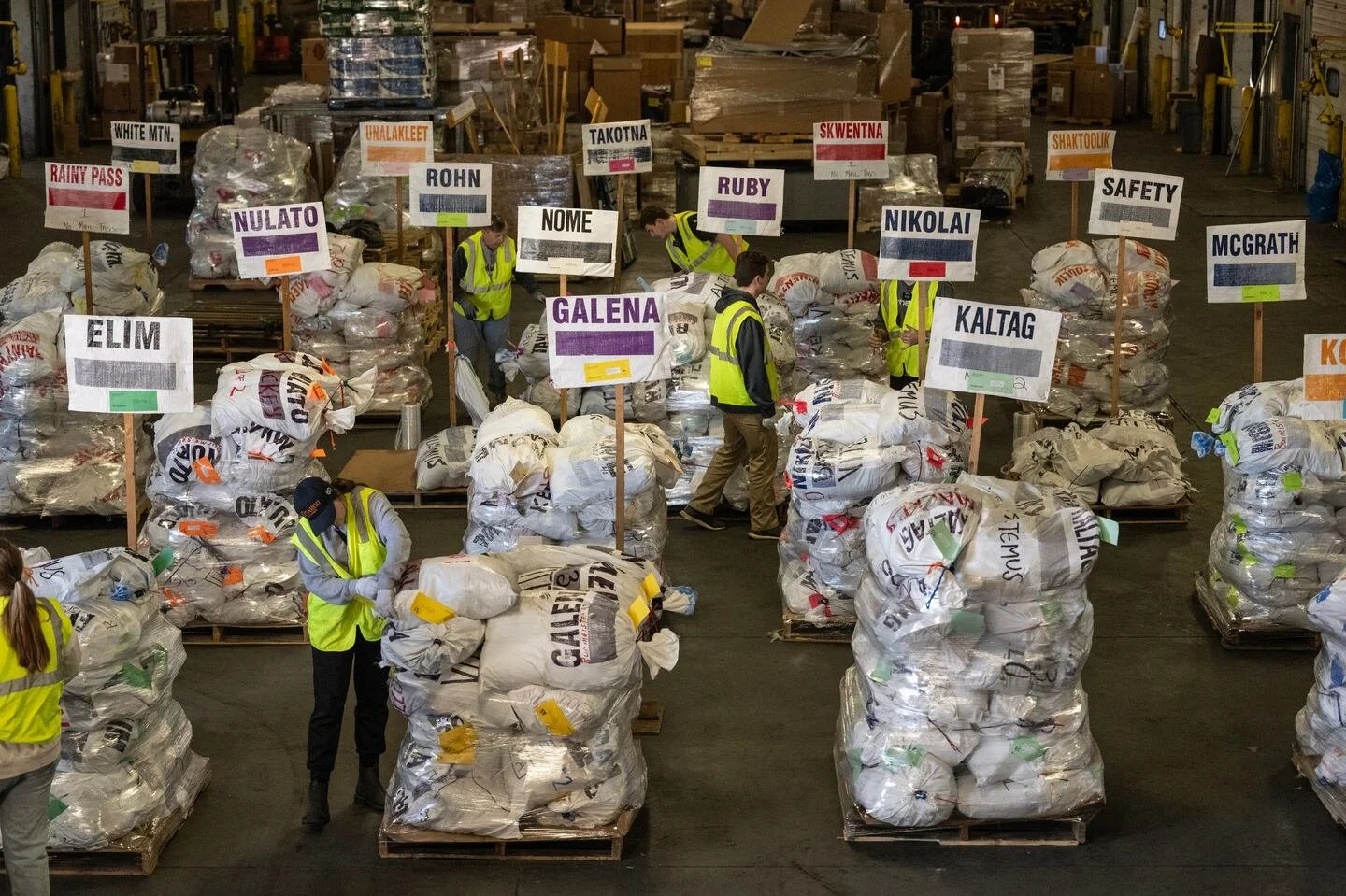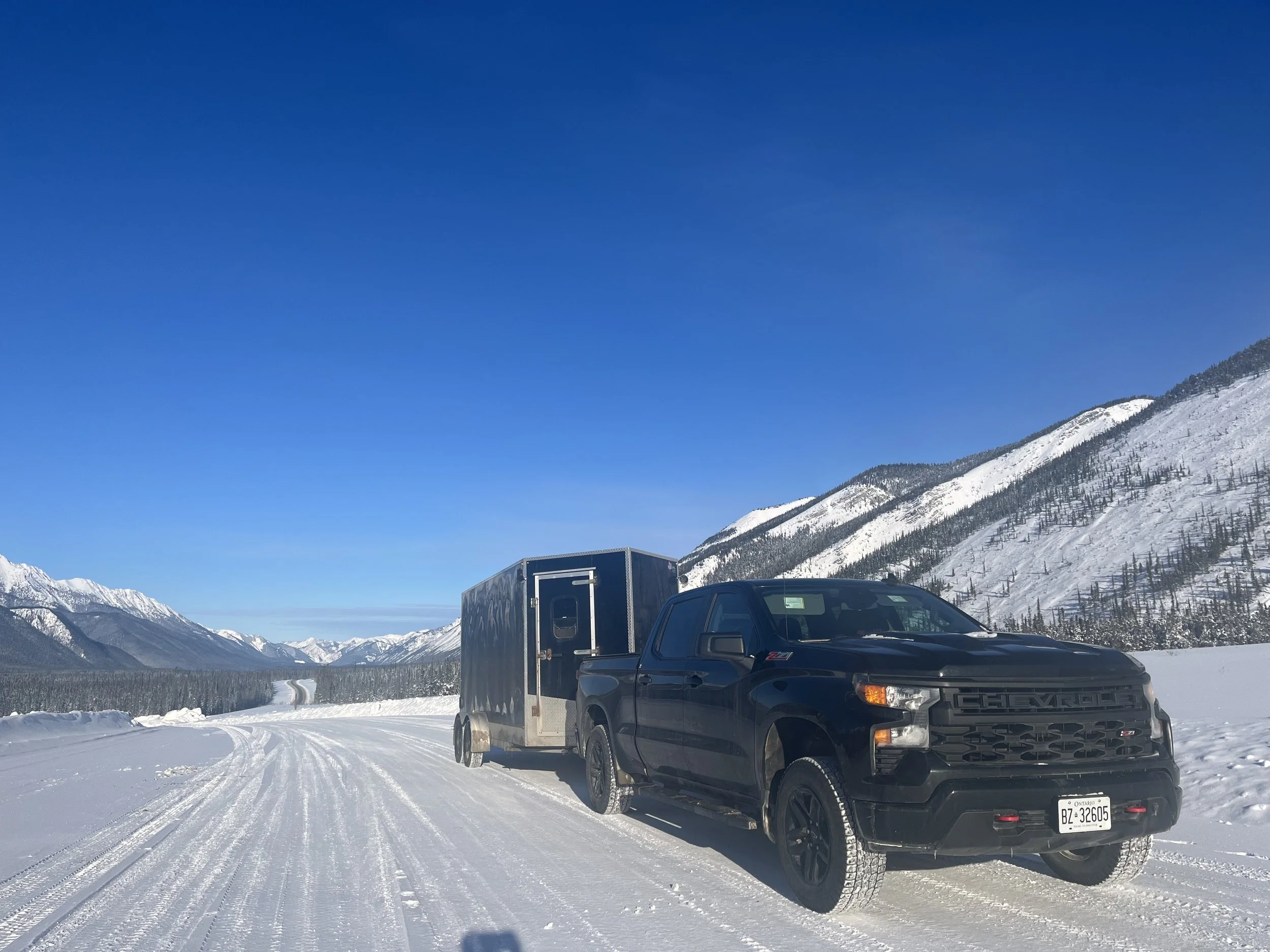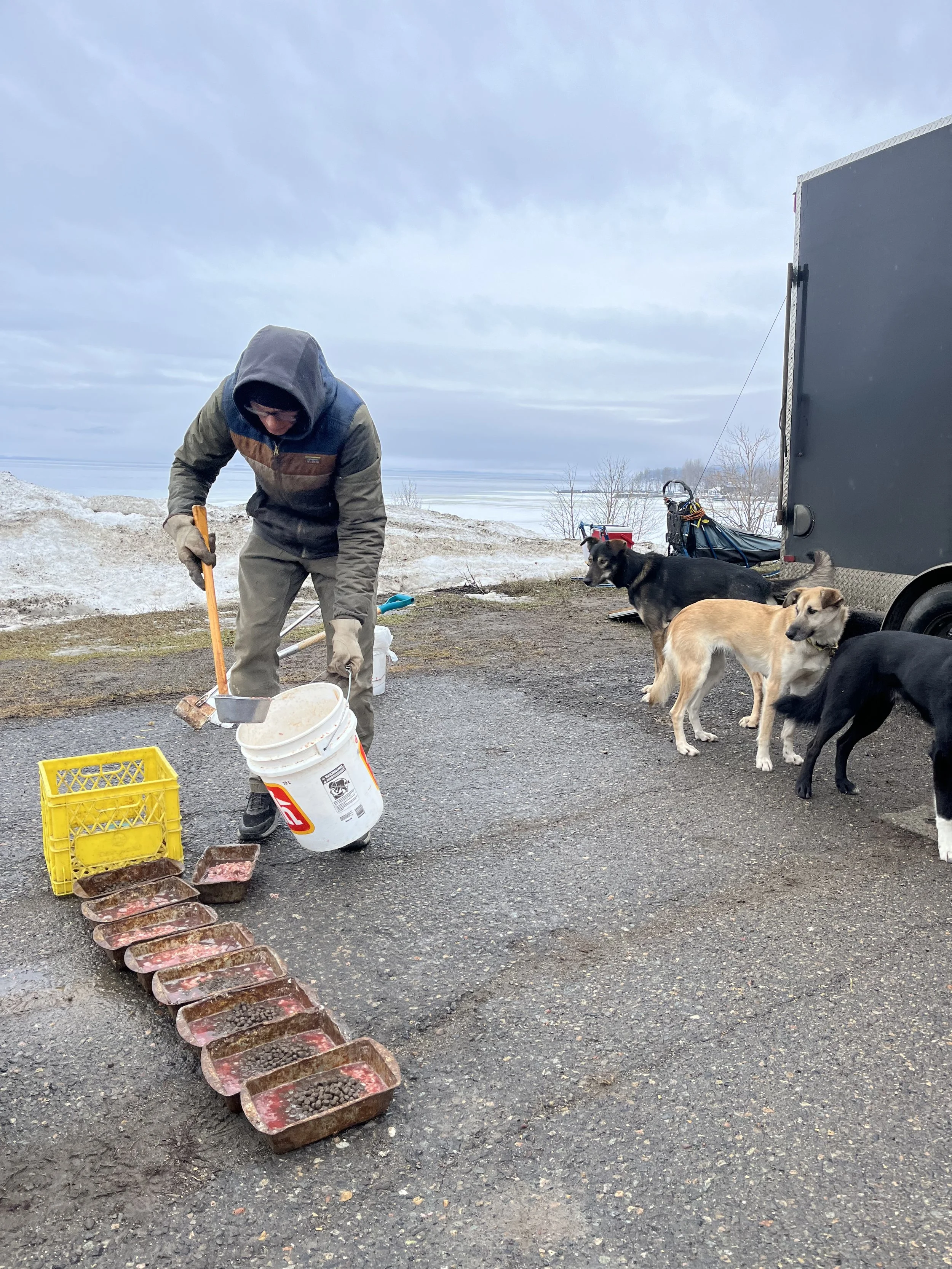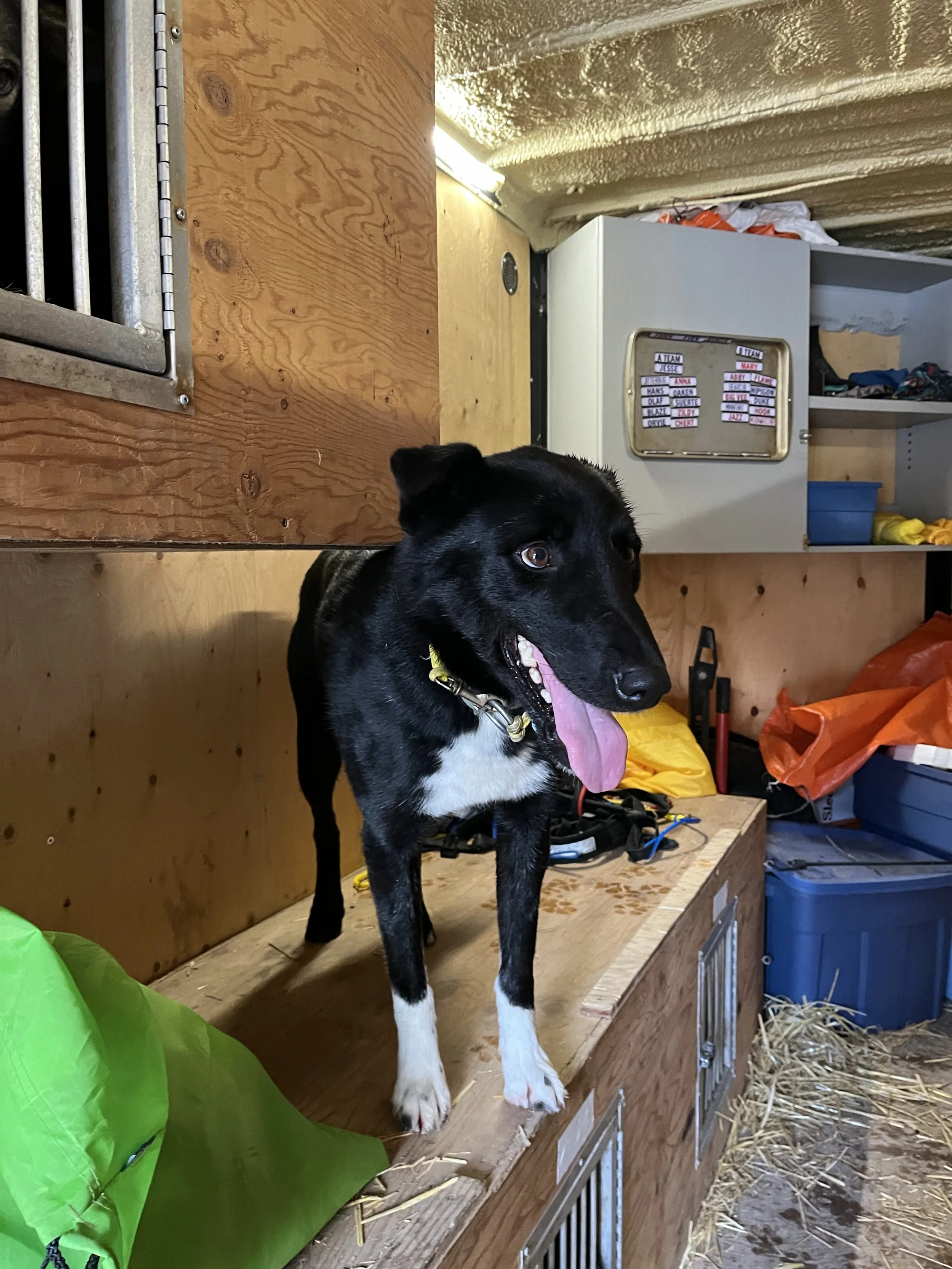Making it to Iditarod 2026
Find out what goes into preparing for a sled dog race. The scale of the Iditarod is so big in all ways, but fundamentally a familiar routine. Read below to learn what it will take!
This is an exciting year for On The Land Sleddogs! Jesse has signed up for the 2026 Iditarod, the world’s longest sleddog race - 1000 miles through the Alaskan wilderness. A properly trained sled dog is truly the world’s best endurance creature, so the Iditarod showcases the most elite endurance athletes in the world!
Getting to the start line
The dogs log countless training miles on a carefully planned schedule — not just focusing on distance, but also on run times, speed, resistance, rest days, and nutrition.
The dogs’ athleticism never ceases to amaze. We start training runs slow and short, as little as a mile or two to start. By mid winter, they are eating up 50 mile runs with energy left in the tank. As training runs grow longer, new needs come into play: booties for the dogs’ paws, meat snacks cut, and straw for camp outs and multi day runs.
For Jesse and Mary, training is an intimate time with the dogs, but also means time away from paid work and family life to make sure the team is ready.
Booties
Oh the booties… Thousands of booties go into each season. 24 dogs, 4 paws each, booties for each run. The bootie-math adds up.
Each bootie will last two, maybe three runs before they wear out. Reusing booties means a lot of washing, drying and sorting, saving the used ones for training runs, and new ones for racing.
Dogs use booties for a variety of reasons. In early season, they protect the pads of the paws from coarse snowless ground. In wet snowy conditions, they prevent build up between the pads. In dry sugary snow, the snowflakes actually have sharp crystalline edges that can cause splits high up between the digits. Booties are simple, effective and essential.
Musher spring cleaning
Nibi, our house dog, is tired of rolling booties
Organizing race booties
Meat snacks
Prepping meat snacks for the season is an important task. Dogs will eat a snack roughly every 2 hours of run time. We cut them into frozen fingers to enable an easy chomp - minimize energy and time it takes to get it down the gullet!
On the menu: chicken, beef, liver, beaver, tripe, and more!
“Drop bag” preparation is what most mushers say is a monumental accomplishment. The Iditarod has 26 checkpoints where mushers will leave several large drop bags of supplies. All the dog and human food, fuel, extra clothes, gear, repair kits, runners, even spare dog sleds get organized and packed! These bags must be brought to either Seattle or Anchorage one month before the actual race. Then the team of Iditarod volunteers get to work organizing the 1000’s of pounds of gear from each musher to deliver it to the remote communities and check points along the trail. Amazing coordination!
Iditarod drop bag sorting warehouse, Anchorage. Marc Lester / APN
Then we travel! 3030 miles, or 4876 km to Anchorage. Dogs love their cozy dens in the trailer. Driving means “dog drops” every few hours, allowing them a chance to stretch, snack, sniff around and relieve themselves. We also plan runs along the way. Weather can be unpredictable and in past races we’ve come across -40C to + 15C. We prefer the cold.
